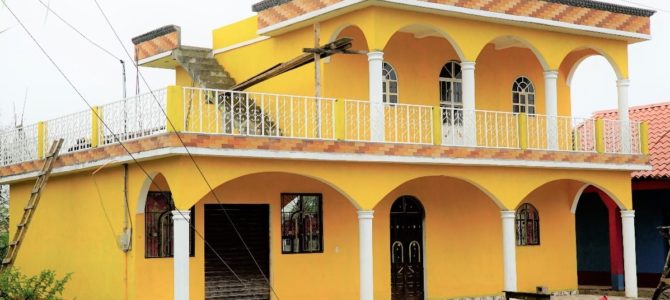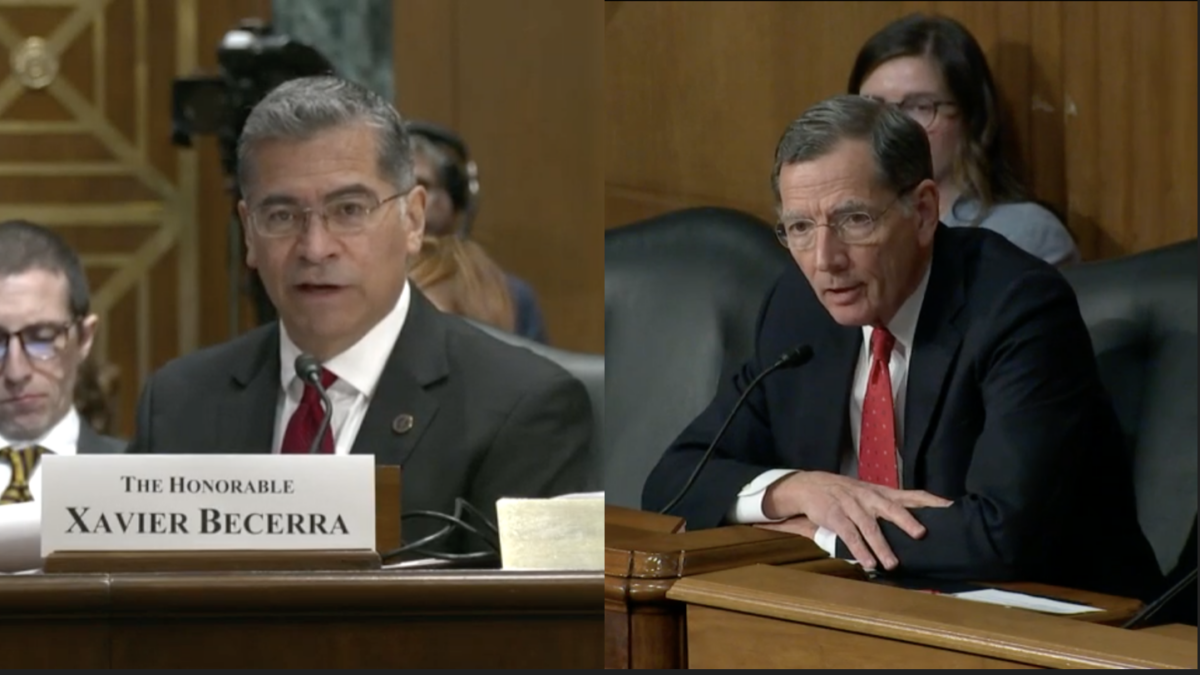
YALAMBOJOCH, Guatemala — A year or so ago, international reporters descended on this small indigenous village to report its agony in having lost a native son, eight-year-old migrant Felipe Gomez Alonzo, to flu-related illness while in U.S. Customs and Border Protection (CBP) custody near El Paso.
The reporters framed the boy’s migratory trek with his father to the United States, along with hundreds of thousands from this highlands province during 2018-2019, as driven by “crushing poverty,” “cycles of rising debt,” “racism and violence,” climate change-induced child hunger, and the catch-all “dreams of a new life.”
But it turns out that none of these circumstances, told repeatedly to the American public as justification to open the border gates wide, exist in emblematic Yalambojoch. According to town officials and residents, the one main factor that actually caused all but about 300 of Yalombojoch’s 1,500 villagers to leave was: lust for the large modern houses of neighbors, which are now a “status symbol” du jour throughout the Mayan descendant country.
The journalists who came to broadcast the sad tale of a local boy’s death (for which CBP was exonerated), could not have failed to see comparatively cavernous, multi-story, concrete modern houses all over town, complete with faux-gold window and door trimmings, and eight or 10 bedrooms as replacements for traditional indigenous dwellings. Remittance money from the United States is funding them.

Hamlet leaders and residents readily said that powerful desire to replace traditional mud-brick and wood residences with the big new ones—enabled by discovery that the American “Flores Settlement” loophole allowed immediate release inside the U.S. of any illegal entrant with a child—were the only reasons so many left when they did. The population transfer reached at least 300,000 Guatemalans during 2018-2019, the majority indigenous peoples from this mountainous region known as Huehuetenango.
“A lot of people started to see a lot of people going to the U.S. starting to build big houses, and we wanted the same,” Francisco Santizo, who sent a 20-year-old son to the United States on the recent migration wave out, told me during a recent reporting trip to Guatemala for the Center for Immigration Studies. “When my son was growing up, we saw that everyone was building houses and when my son grew up, he said to us, ‘I’m going to go to the U.S. now so I can send you money to build a house too.”

Now, the Santizos have erected a three-story concrete house with a vast interior of eight bedrooms, living room spaces, and multiple stairwells. They are hardly alone in citing the want of house for sending their loved ones forth.
They are among three families building new homes on remittance money that provided the same explanation for sending sons, daughters, and fathers to the United States. Village leaders and other residents said so too.

Plans to Return Give Lie to Massive U.S. Asylum Claims
The Flores loophole let hundreds of thousands of Guatemalans into the United States through simply claiming political asylum at the border, on various grounds of government persecution. But if house envy as a primary motivation gives lie to such asylum claims, so do family plans for loved ones to return and live in the houses they funded.
The families building the houses believe their loved ones will return once construction is complete. This debunks the claims of grinding hunger, government persecution, and government-enabled gang violence peppering most media reporting, human rights group accounts, and asylum claims. More than 615,000 asylum claims were logged in just 2019, and one of the top nationalities in recent years was Guatemalans, according to Executive Office for Immigration Review (EOIR) statistics.
According to the town’s mayor, vice mayor, and randomly interviewed residents, though, crime is so absent here that Yalambojoch doesn’t even need a police officer. No one has detected government persecution since the civil war ended a quarter-century ago. And Yalambojoch is one of thousands of indigenous villages with a proud ancestral heritage of subsistence farming that always provided reliable food security.
“This is a really quiet and calm place,” Mayor Francisco Pais told me during an interview with a half dozen other town leaders, who all agreed.
“The problems of gangs and criminals don’t happen here. People see other people building the pretty houses, so they want to go too,” he explained. “They work for four or five years and then they come back and live in them.”

People in Yalambojoch like Consuelo Jorge Domingo don’t pretend there is any other reason for their loved ones to depart a village so safe and sustaining that they are willing to invest in its long-term future and return to live it.
“We wanted a big house for our family like everyone else is building,” Domingo said, explaining the departure of her husband to work in the United States. Blue tiles and window and door dressings adorn the massive two-story house her in-laws are building for her and her eight-year-old daughter Evelyn with his remittance money.
“It will be finished soon, and then he will come home and live in it with us.”
Why Knowing This Matters
Identifying and understanding the true “push factors” that drive mass migration is important to formulating American policy responses to it. For instance, if achieving a big house then returning to it is the primary motivation for huge numbers of Guatemalan emigres, then the probabilities of large-scale asylum fraud increase by magnitudes. U.S. Border Patrol agents, asylum adjudicators, and immigration judges should know to ask about this in addition to violence and government persecution when considering deportations or asylum claims.
Knowing is significant to public policy in many other ways. For instance, if widespread violence and government persecution aren’t really in evidence, then the United States should be able to return Guatemalans to their homeland and partially completed houses, with fewer legal and political oppositional entanglements.
Critics of a Trump policy that requires non-Guatemalan asylum seekers to apply for asylum in Guatemala before anywhere else—using so-called “safe third country agreements—fail to gain political and lawsuit traction if bigger houses, not gang danger and government persecution, was really what drove hundreds of thousands to the U.S. border.
One of the more prominent proposals, based on the violence-persecution-poverty narrative, is to send Central American governments a massive infusion of U.S. development aid, like the Marshall Plan for post-World War II Europe to lessen the economic need of people to emigrate. Support for such an idea would likely collapse if the money were to be used to fund the giant multi-story concrete houses currently motivating emigration from this village.

A Phenomenon Omitted from Broad Public Knowledge
Housing greed and lust for one as a social status symbol was said to have infected the region when the first huge house went up in 2000. But a drive through the province found that large, colorful new concrete houses are popping up in every village, indicating that Yalambojoch presents an anecdotal hint at a much broader undocumented reality.
There are strong clues that house envy and return plans are not limited just to the now-depopulated Guatemalan highlands. The idea hasn’t caught on in popular media, perhaps because it doesn’t fit political narratives.
Center for Immigration Studies Fellow Art Arthur, a former immigration judge, wrote a column last year about the tragic drowning death in the Rio Grande shallows of an El Salvadoran father clutching his drowned child, a case that drew international media attention. Arthur emphasized a push factor that was never prominently mentioned: the drowned father of that dead child had gone to the United States with a plan to build a big house back in El Salvador and one day return to it.
One scholar has long documented the phenomenon as widespread in Mexico too. Sarah Lynn Lopez, associate professor of architecture at the University of Texas in Austin, authored “The Remittance Landscape” and found over 15 years of research in Mexico that new-home builds have long been a primary impetus for emigration to the United States.
“It absolutely is one,” Lopez told me in a telephone interview. “That is definitely something that people would completely agree on, and there’s evidence to back it up.”
She said the fact that this key immigration push factor hasn’t reached popular knowledge or used to direct government policy prescriptions has always “kind of amazed me.”
“But it’s definitely one of the findings,” she said. “That it (housing desire and planned returns) is an impetus for migration.”









